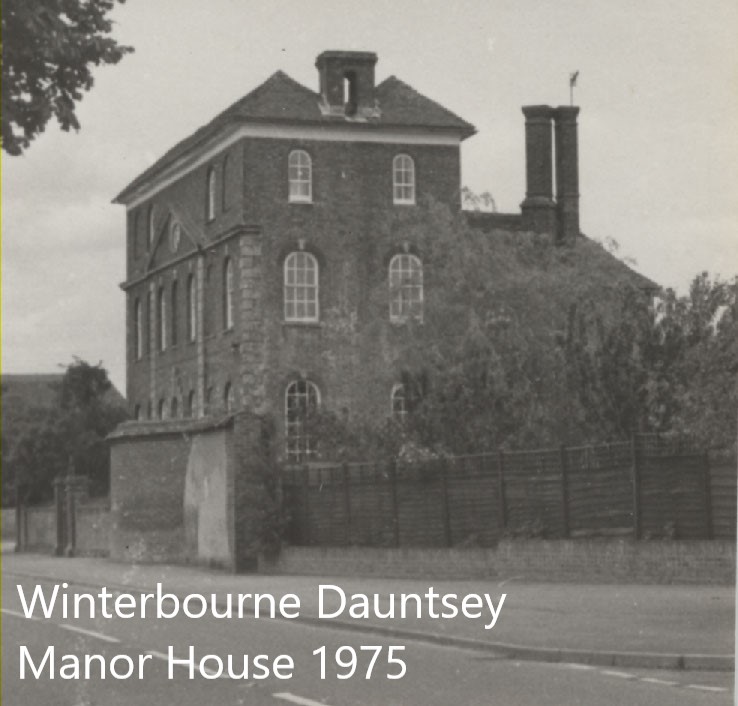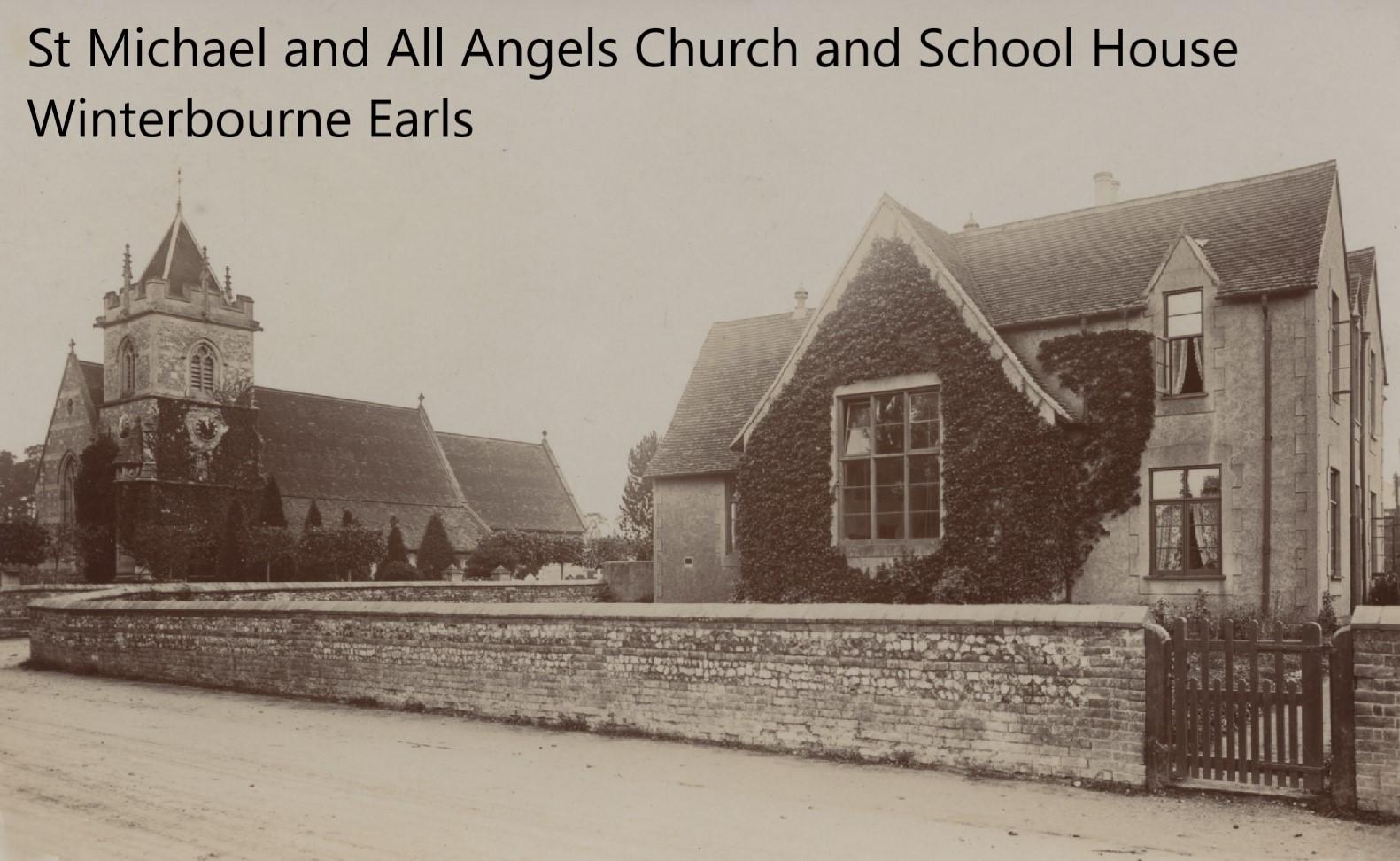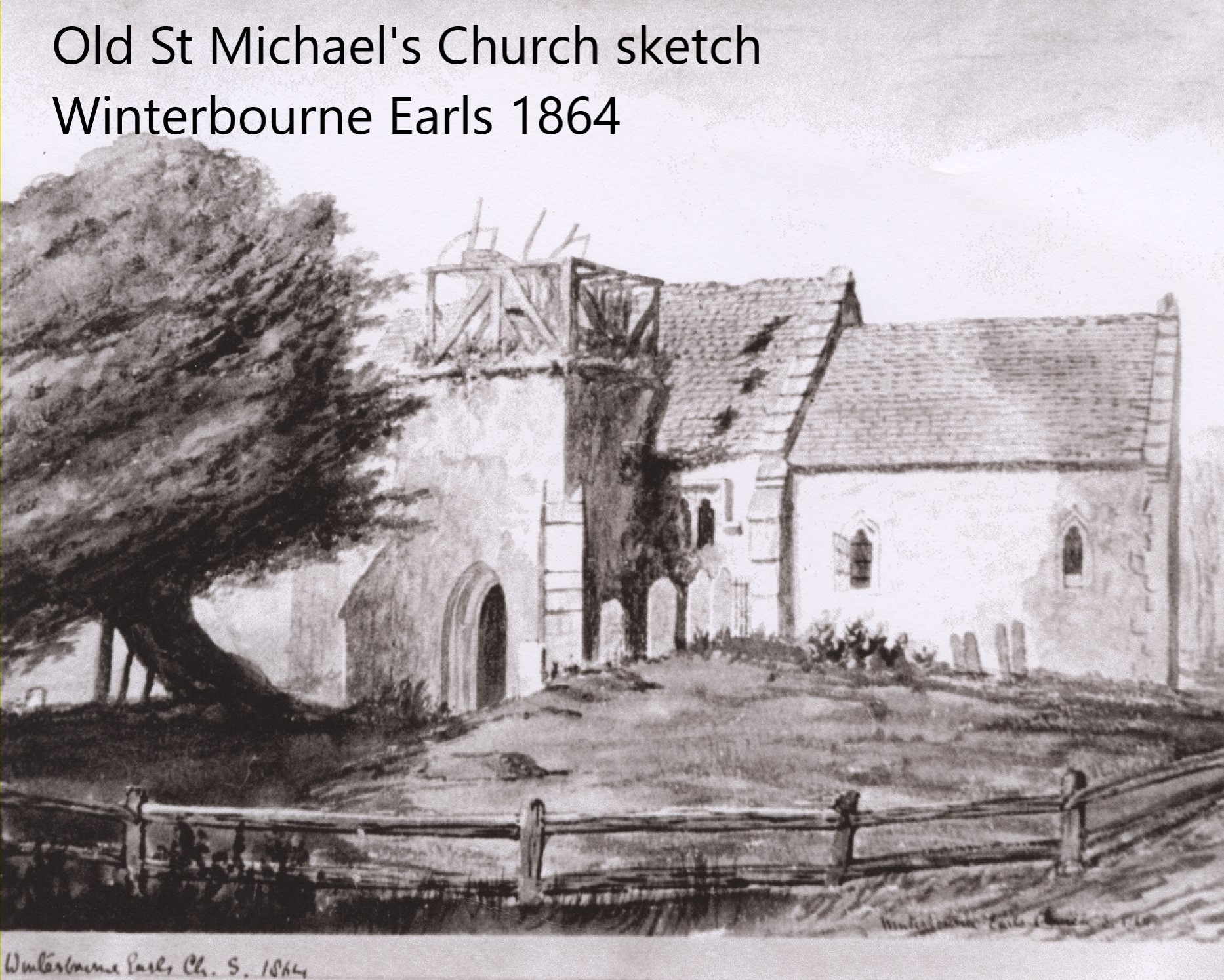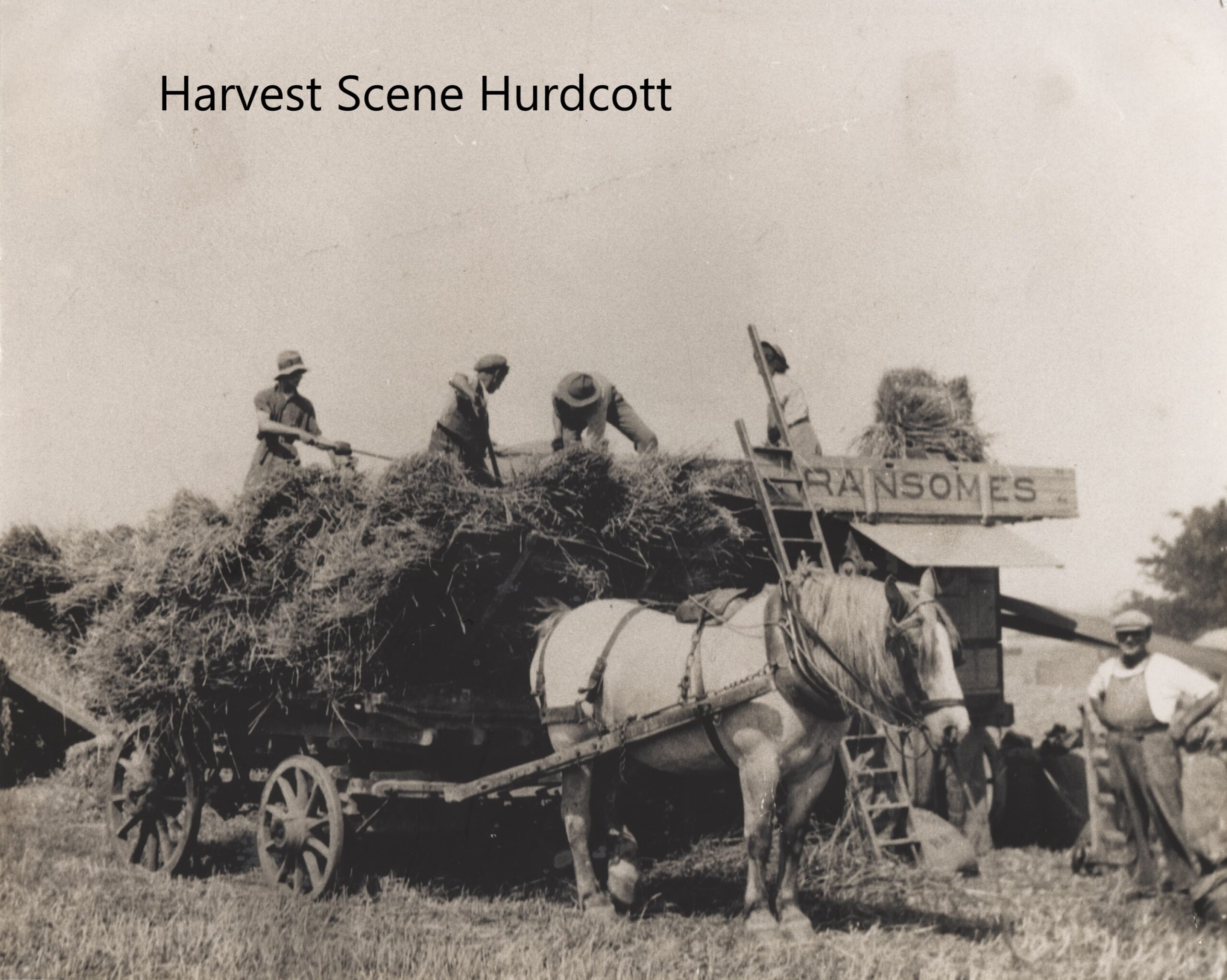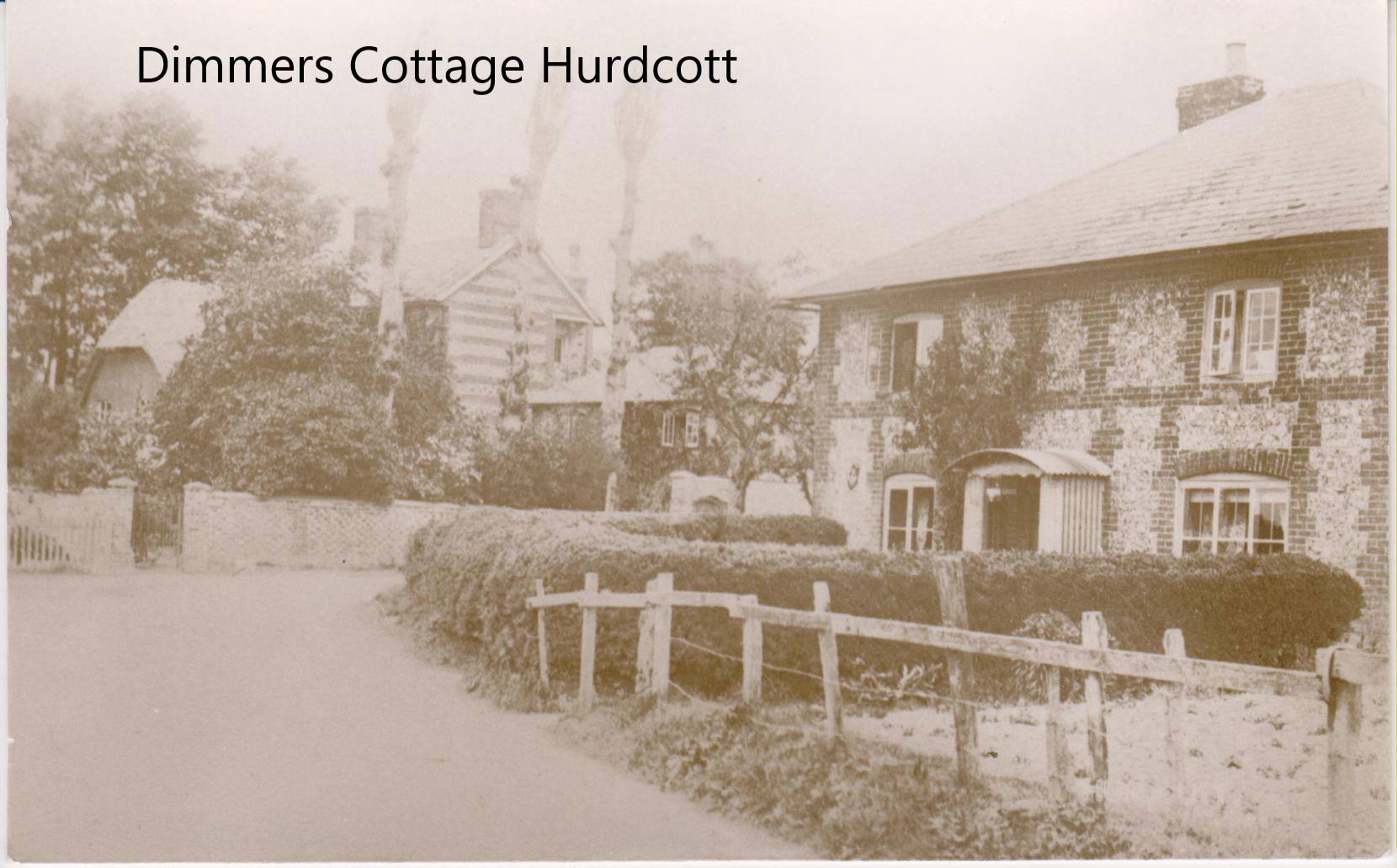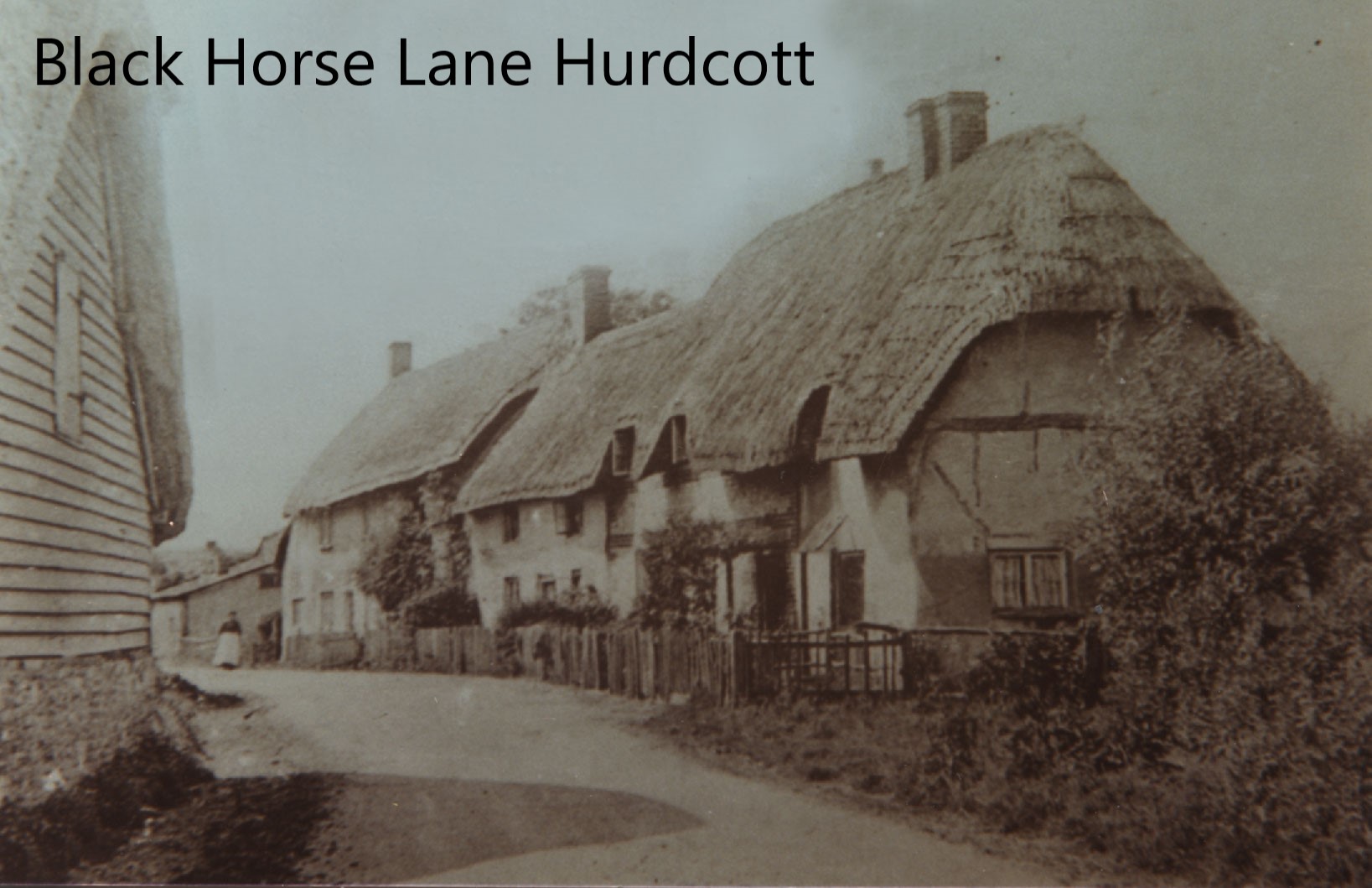The Winterbournes & Hurdcott
Though they touch each other, each of the three Winterbourne was a separate manor. until 1868 each had a Church.
Box cottage has its own story. Its rent was once a red rose annually. And behind it, in the smithy, the great fire of 1633 began. Twenty-four families were left homeless and the village a blackened ruin.
Two men of the 1960s are also remembered. “We had two tramps. One pushed a bike through the village swearing. Mrs Skyrme looked after him. Mrs Anton used to give breakfast to the other one. Her dog loved his smell – all earth and fire and river.” His long coat was tied with binder twine, and he’d come in for “Five Woodbines, if you like,” added Dave Baker at the shop, of such is village history made.
The lollipop lady, Cely Jarvis she braved the traffic for 21 years, Penny Anton’s history of the school goes back to the days before cars, and introduces us to little Ethel Rogers, who began as a pupil aged three, rose to monitress in 1897 and became a teacher she retired from the school aged 65, now called Mrs Medlam
The legend of the Blue Lady of Dauntsey Manor house. A portrait of one Mary Abbott, dressed in blue can be found in the manor house. This errant Mary ran away from her husband and then repented. Returning, she found the house bolted and her body was found in the snow the next morning. Mary outlived her husband, but the portrait is sold with the manor house “Lest her ghost of the blue lady return.”
Seven Merrifield children who were raised in a one-up-and-one-down Hurdcott cottage had to stay in bed on Saturday mornings while their mother cleaned the house. To pass the time, they used to recite the names of everyone in the village.
1st October 1987 “Message in a bottle,” found buried three feet down opposite the Black Horse in Hurdcott was to be reburied with an article about how it was found from the Salisbury Journal. All the original says is “Put hear (sic) by J. Williams and T Coombs June 16 1903,” the message was written on the back of a business card of W T Gould RSS, the new forge, Nether Wallop. The bottle was made by a local firm, Hopkins & Son. Which until the 1950s had a bottling factory at the Black Horse, Castle Street, Salisbury.
Alison Kidd. Publisher, Salisbury Journal, 1988.
Some History of the Winterbournes by Jenny Head
‘As we stand on the windswept hill of Figsbury, we can look down at the valley of the Bourne and take in at a glance the village of Winterbourne as it nestles in the folds of the hills which rise on either side’. (Charlie Bray – The History of Winterbourne)
Charlie Bray was the first secretary of the Bourne Valley Historical Society. His thorough research and recording of the history of Winterbourne is a valuable resource. Charlie’s writing started to appear in instalments in 1951. Had it been 20 years earlier, the title would have referred to ‘the Winterbournes’ but in 1934 the three villages of former times had been merged into one civil parish. Despite this, the names ‘Winterbourne Earls, Winterbourne Dauntsey and Winterbourne Gunner’ are still in use today. What were their origins?
In the past, the three villages had separate Manors and until 1868 each community had its own church. The Domesday Book records that in 1086 the Manor of Winterbourne Earls was held by Edward of Salisbury. The property later passed to his grandson Patrick, who was the first Earl of Salisbury. His son William succeeded him and left three daughters, of whom Ela, the eldest, inherited his Salisbury estates and became the Countess of Salisbury. Ela was given in marriage to William Longespee, half-brother of Richard 1st and they became Lord and Lady of the Manor of Winterbourne Earls whilst living in the castle at Old Sarum. William travelled widely, was present at the signing of the Magna Carta and won fame as a soldier. He died somewhat mysteriously, following a banquet at the castle and was the first person to be buried in the new Cathedral in 1226. His story and tomb still attract many visitors. Ela later became a nun and went on to found Lacock Abbey. She has been described as ‘one of the towering female figures of the 13th century’. The Manor of Winterbourne Earls continued in the possession of famous people, the last of whom was Edward Seymour, Duke of Somerset, who was Lord Protector of England from 1547 until 1549.
The original medieval church of St Michael’s in Winterbourne Earls was just off Tanners Lane, behind Earls Manor Court. It was demolished in 1867, together with the medieval church of St Edward’s in Winterbourne Dauntsey. Fragments from both were used in the construction of the new church of St Michael & All Angels in the late 19th century, making this church very much the spiritual heir of its medieval predecessors.
Winterbourne Dauntsey is the middle village. The name ‘Dauntsey’ is derived from Danic, a Saxon name that meant that Danic had an ile (land) that was surrounded by water. A branch of this family settled in the middle village and called it Dauntseye in order to distinguish itself from the other two villages called Winterbourne. Milo de Dauntseye was Sheriff of Wiltshire in 1163. Tommasia Dauntseye and her descendants held the Manor in the village and the Dauntseye family lived there until 1493. It is possible that this family built St Edward’s Church in Gaters Lane, which was consecrated in 1326 and some family members may be buried in the churchyard, which is open to visitors. The yew tree is thought to be approximately 600 years old., derives its name from Gunnora de la Mare who became Lady of the Manor in the 1230s. Gunnora was a Norman name of Scandinavian origin. The beautiful medieval church of St Mary the Virgin remains today. It too originates from the 12th and 13th centuries, with later additions.
Three rural and insignificant villages but they had close links with great historical events including the Magna Carta and the building of the new Cathedral.

